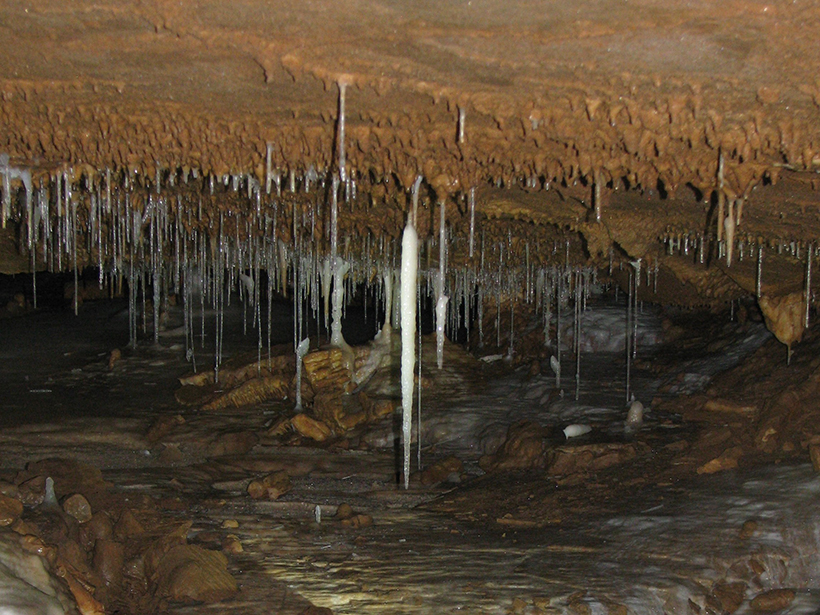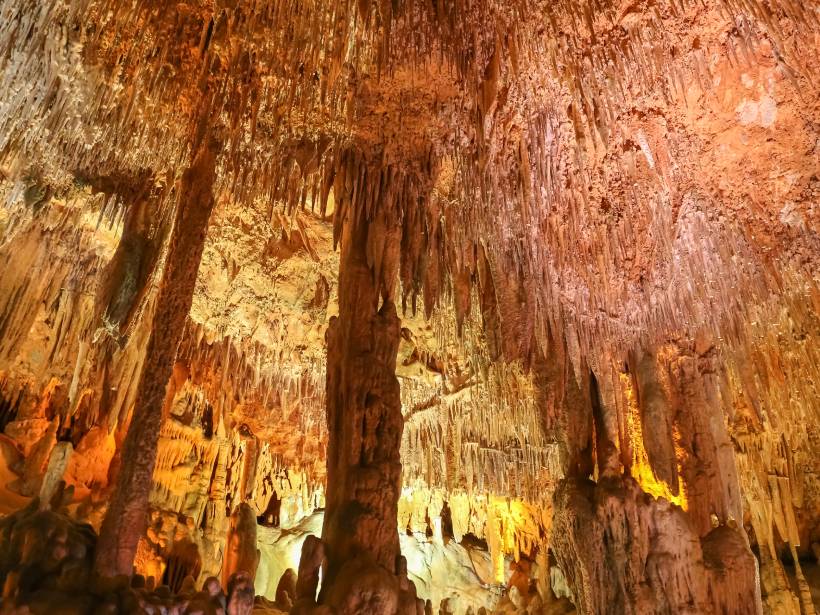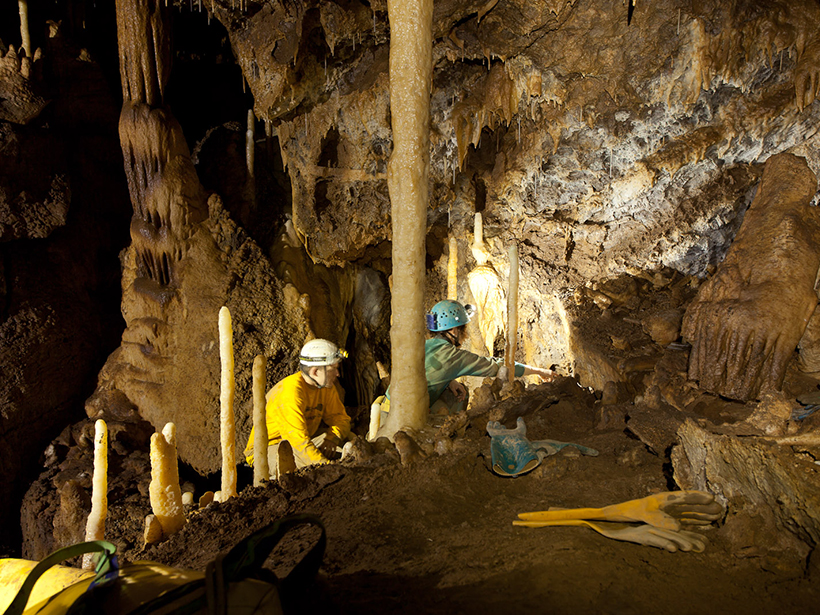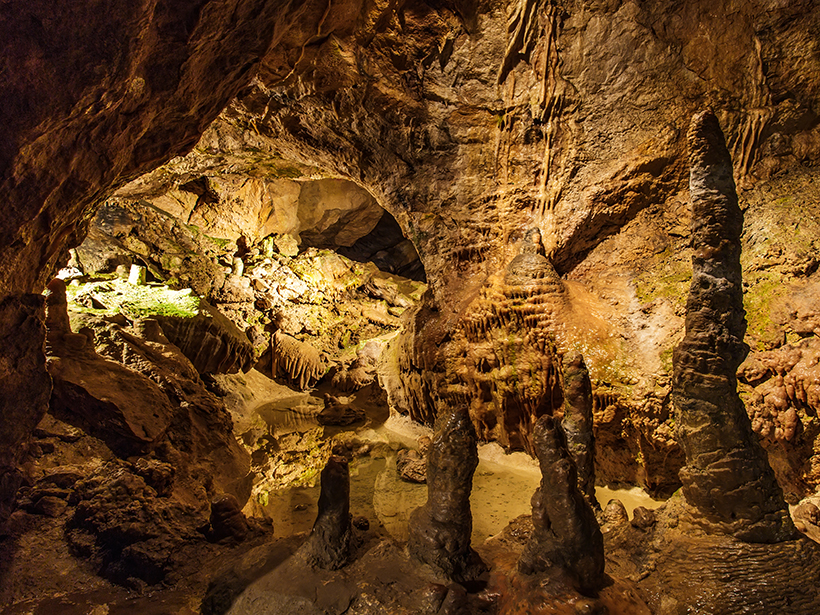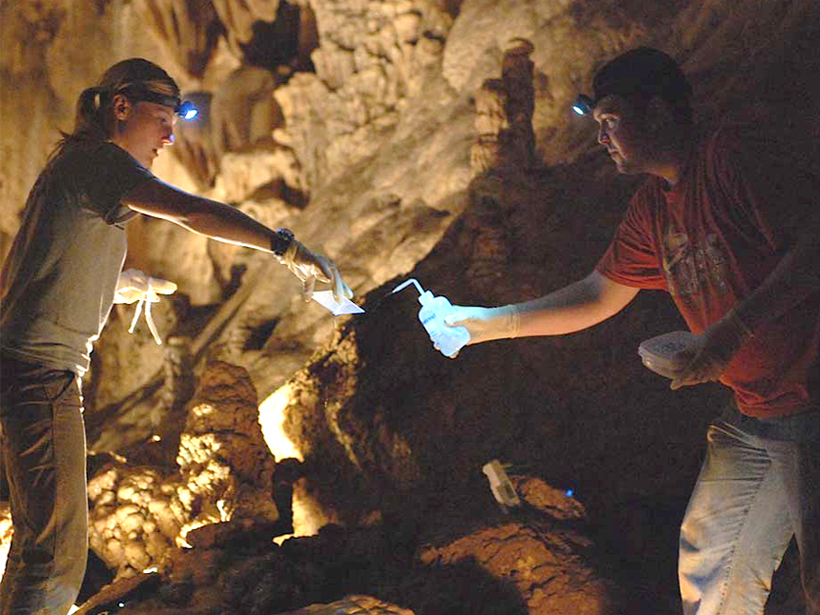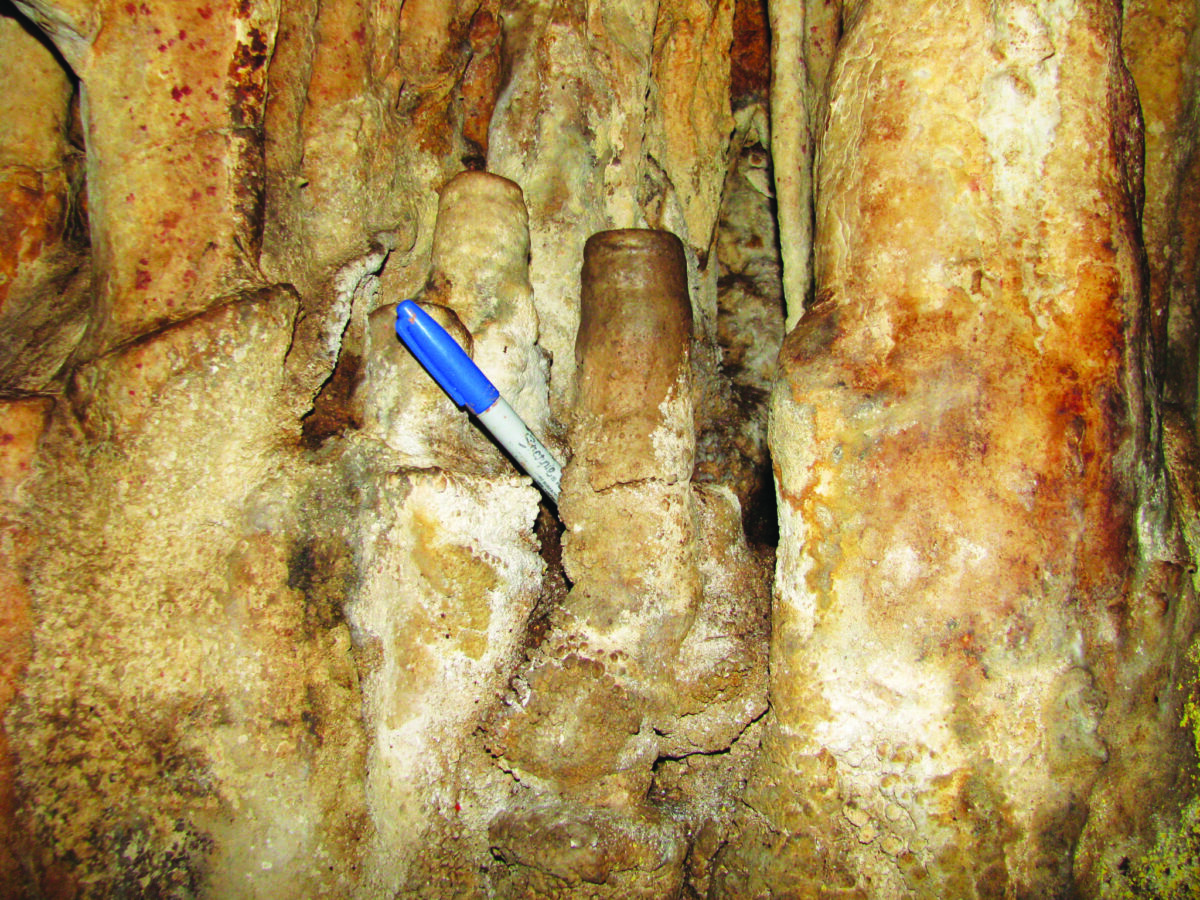Paleoclimate databases are powerful tools for improving climate models. The recent work of speleothem researchers offers lessons on creating a lasting database and fostering the needed mindset.
speleothems
Sooty Layers in Stalagmites Record Human Activity in Caves
Scientists analyzing cave formations in Turkey find layers of soot and charcoal in stalagmites, revealing that humans—and their fires—occupied caves thousands of years ago.
Taíno Stilt Houses May Have Been an Adaptation to Climate Change
A coastal village in the Caribbean flourished during a period of increased hurricanes. Research suggests the Taíno designed their dwellings to persist through the greater storm surges.
Past Seasons Hidden Underground
Belgian paleoclimatologists study a fast-growing stalagmite to glean insight into seasonal climate from centuries past.
Megadrought Helped Topple the Assyrian Empire
Paleoclimate records shed light on the ancient civilization’s meteoric rise and catastrophic collapse.
The Akkadian Empire—Felled by Dust?
Chemical measurements of a stalagmite from a cave in Iran reveal a large uptick in dust activity in northern Mesopotamia roughly 4,200 years ago, coincident with the decline of the Akkadian Empire.
How Ice Rafting Events Affect Asian Monsoon Hydroclimate
Cave stalagmites provide isotopic evidence that Bond events and Heinrich events have more variable effects on Asian monsoon hydroclimate during the last glacial period than during the Holocene.
Subterranean Caverns Hold Clues to Past Droughts
Cave formations offer highly resolved paleoclimate data that scientists plan to use to reconstruct California's ancient patterns of drought.
Cave "Breathing" Affects Mineral Growth and Climate Clues
A new global model suggests how and where air flow in caves affects the growth of cave mineral deposits that scientists use to reconstruct ancient climates.
A Dearth of Hurricanes Cannot Explain Maya Collapse
Mud layers in a stalagmite from a cave on the Yucatán Peninsula show hurricane activity was steady or elevated throughout the Maya collapse.

